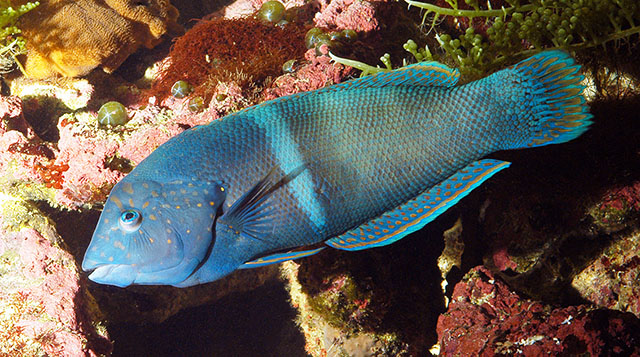| Labridae (Wrasses), subfamily: Corinae |
| 120 cm TL (male/unsexed) |
|
reef-associated; marine; depth range 2 - 30 m |
| Indo-Pacific: Red Sea and East Africa (Ref. 4392) to the Line and Ducie islands, north to southern Japan, south to Lord Howe and Rapa islands. |
|
Dorsal spines (total): 9-9; Dorsal soft rays (total): 12-13; Anal spines: 3-3; Anal soft rays: 12-12. Caudal fin slightly rounded in females, truncate and with filamentous rays in large males; pelvic fins of males very long. Large males also become uniformly dark-green and develop a gibbus forehead and an elongate first dorsal spine (Ref. 1602). Juveniles distinct with the false eyes, shaded by orange (Ref. 48636). |
| Occurs in the vicinity of sand or rubble patches of exposed outer reef flats, lagoon reefs, and seaward reefs (Ref. 1602), often in semi-exposed surge zones (Ref. 48636). Adults solitary. Juveniles common in shallow tide pools (Ref. 30573). Feeds mainly on hard-shelled invertebrates including crustaceans, mollusks and sea urchins (Ref. 9823). Minimum depth reported from Ref. 27115. Randall (1999, Ref. 33411) question identity of specimens exceeding 70 cm. |
|
Least Concern (LC); Date assessed: 12 April 2008 Ref. (130435)
|
| harmless |
Source and more info: www.fishbase.org. For personal, classroom, and other internal use only. Not for publication.

